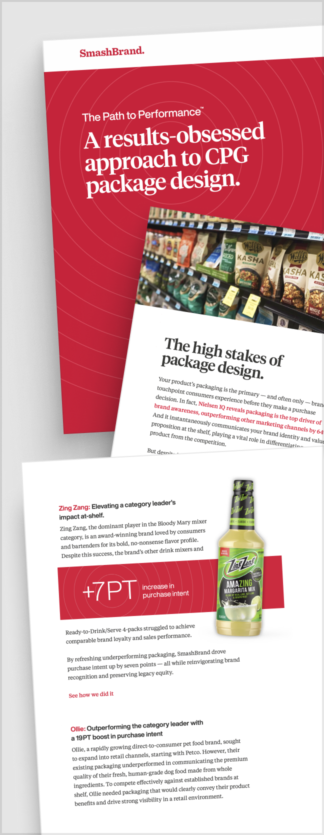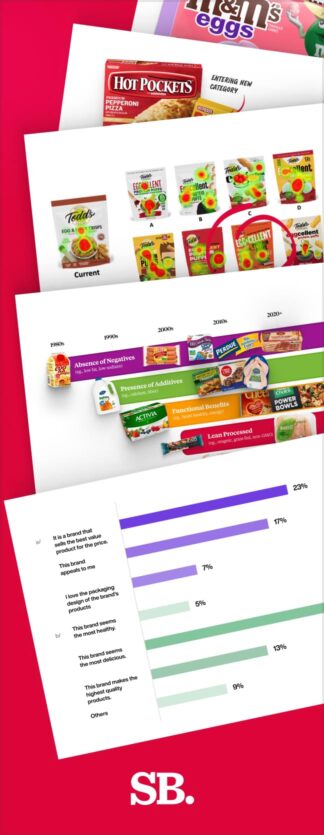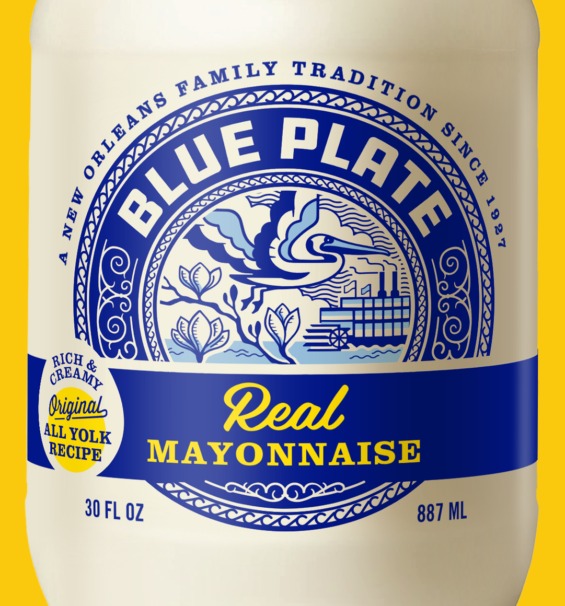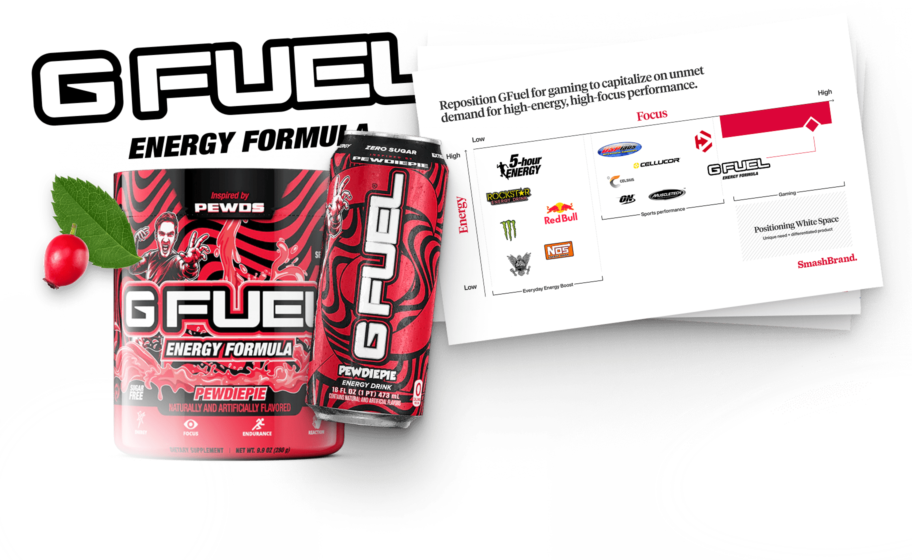Most brand extensions fail—not because they’re unnecessary but because they’re rushed. One-third of CPG executives call innovation the number-one growth driver, yet 75% of industry innovations fail. Why? Many brands jump into different types of brand extensions without a clear strategy, diluting brand equity and confusing consumers.
There are smart and risky ways to extend a brand. A well-planned brand extension reinforces brand identity and expands market reach. There are two types of brand extension: horizontal, which expands into adjacent markets, and vertical, which introduces premium or budget-friendly versions of an existing product. With less than 10% of CPG innovation being truly breakthrough, a structured brand management approach is essential.
This guide reveals the types of brand extensions that drive growth. You will learn to avoid costly missteps when launching a new product and extend your brand without risking everything.
But what is a brand extension?
Before diving into the types of brand extensions, let’s clarify what a brand extension strategy actually is—and what it isn’t. Many confuse it with brand stretching, but the two aren’t the same. Brand stretching pushes a parent brand into unrelated markets, like a cookie brand launching energy drinks. On the other hand, a brand extension introduces new versions of an existing product—for instance, a premium brand launching a budget-friendly product.
At its core, a successful brand extension leverages a solid brand name to break into new spaces while maintaining brand personality and consumer trust. Whether it’s a category extension (like a snack brand launching a beverage) or a premium-tier product, the goal is to strengthen brand loyalty and increase brand awareness—not to confuse buyers.
When brands enter categories that don’t align with their identity, they risk brand dilution, which weakens what made them valuable in the first place. An innovative brand extension strategy ensures that every move reinforces the parent brand rather than undermining it.
The two core strategies of brand extension.
A brand extension strategy isn’t one-size-fits-all. Brands take different paths depending on their market position, goals, and consumer expectations. At the core of every brand development process, there are two primary approaches: horizontal and vertical brand extensions. Both can drive growth, but each serves a different purpose.
Horizontal brand extension.
This approach involves launching a product in a new category that aligns with the existing brand but offers something new. It allows companies to diversify risk, expand market share, and create more consumer touchpoints—without altering their price positioning.
Brands take this route when they have substantial brand value and equity in a particular space but see opportunities in adjacent markets. A well-executed brand extension makes consumers feel like the new product is a natural addition rather than a forced expansion.
For example, KIND Snacks, known for its nutrition bars, introduced KIND Frozen Smoothie Bowls. This brand positioning move leveraged its health-conscious reputation to tap into the frozen dessert aisle without diluting its identity.
When done right, horizontal extensions create more opportunities for cross-category purchases while reinforcing rather than diluting the brand architecture.
Vertical brand extension.
Unlike horizontal extensions, a vertical brand extension keeps the product category the same but shifts pricing and quality upward (premium) or downward (budget-friendly).
Why brands do it:
- To capture new demographics without alienating their core audience.
- To strengthen brand authority by offering tiered options.
- To create a product line extension that meets different consumer spending behaviors.
Dove DermaSeries, a premium skincare line, elevated Dove’s reputation for gentle cleansing into the dermatological space. With advanced formulations targeting severely dry skin, this brand extension strategy reinforced Dove’s expertise while appealing to a higher-end consumer segment.
Häagen-Dazs Mini Cups introduced a more affordable, portion-controlled version of its indulgent ice cream. This product extension allowed the premium brand to reach budget-conscious shoppers while maintaining its brand image as a luxury treat.
Whether expanding horizontally or vertically, a creative brand development approach ensures that every new product idea builds equity rather than dilutes it.
Specific types of brand extensions that work.
Not all brand extensions succeed—some confuse consumers, dilute the brand image, or fail to deliver real value. But when backed by consumer insights, brand equity, and strategic positioning, specific brand extension strategies have a proven track record of driving growth.
Category extension.
A category extension allows a brand to move into a related product category, leveraging its brand name and consumer trust to expand its reach. This approach works when a brand has strong brand awareness in its core market and can offer a new product that naturally aligns with its brand personality and consumer expectations.
For instance, Gatorade, long associated with sports drinks, expanded into energy bars and protein powders. By entering the sports nutrition space, Gatorade reinforced its authority in athletic performance without confusing consumers.
When to use it.
- If consumer data shows demand for an adjacent product.
- When the existing brand has credibility in the new category.
- If the extension strengthens the brand architecture rather than diluting it.
An effective category extension makes consumers feel like the new product is a logical next step rather than a forced expansion. When done right, it increases brand loyalty, expands market share, and drives long-term success.
Line extension.
A line extension expands a core brand by introducing new flavors, sizes, or formulations within the same product category. This approach allows brands to maximize brand equity while catering to evolving consumer preferences. Line extensions enhance brand distinction, drive incremental sales, and deepen customer loyalty when executed strategically.
For example, Ben & Jerry’s introduced flavors with a gooey center of caramel, fudge, or peanut butter running through the middle. This wasn’t just another new flavor—it was a brand development strategy that created a unique eating experience, making it stand out in a crowded freezer aisle. Unlike many failed brand extensions, which add flavors with no value, this concept strengthened Ben & Jerry’s identity as an indulgent, innovation-driven brand.
The key to success.
- Competitive product audits ensure differentiation from other market offerings.
- Brand strategy should focus on extending variety without cannibalizing core brand sales.
- Purchase intent testing validates consumer demand before launch.
- Tracking the brand development index helps measure the extension’s market impact.
A line extension strengthens a brand’s presence without weakening its original appeal when aligned with a strong brand-building approach.
Companion product extension.
A companion product extension introduces a new product category that enhances an established brand’s core offering. Unlike a vertical brand extension, which moves up or down in price, this strategy expands a brand’s product line while reinforcing its brand personality and value proposition. A well-executed brand-building approach ensures the extension feels like a natural fit rather than an unrelated addition.
For example, Ferrero took its iconic Nutella spread and introduced Nutella & Go!, a snack pack with breadsticks or pretzels for dipping. This product brand development move extended Nutella beyond its traditional jar format, making it more convenient for on-the-go consumption. Instead of competing with the core spread, it created a complementary new product category that drove incremental sales while maintaining brand valuation.
How does it work?
- Consumer testing ensures relevance and confirms real-world demand.
- Brand licensing opportunities can help scale similar concepts.
- A successful brand strategy differentiates the new product while aligning it with the core brand experience.
Private label or exclusive retail extension.
A private label extension involves creating a store-exclusive version of an original brand to strengthen retailer partnerships and expand market presence. Unlike a complimentary product extension, which enhances a core product, this strategy helps brands gain prime shelf space while maintaining brand association in new retail environments.
Again, Ben & Jerry’s is a suitable example here. The company partnered with Netflix to create an exclusive ice cream flavor that is available at select retailers. This brand innovation and packaging move leveraged Netflix’s massive audience while maintaining Ben & Jerry’s playful product branding strategy.
Key takeaway.
- A successful brand extension strategy ensures retailer exclusives don’t undermine managing brand equity in other sales channels.
- Retailer partnerships should align with a product branding strategy that differentiates the exclusive offering.
- Brand innovation and packaging should create unique visual cues to signal exclusivity while maintaining brand consistency.
Lifestyle brand extension.
A lifestyle or equity extension allows a brand to move beyond traditional CPG marketing and into cultural experiences, services, or industries where it can build deeper consumer engagement. This approach shifts the brand from selling products to strategic brand development, creating an emotional connection beyond the aisle.
For instance, Red Bull, originally an energy drink company, expanded its brand by creating an extreme sports platform. This includes sponsoring events like the Red Bull Air Race and owning sports teams like Red Bull Racing in Formula One. This strategy aligns with Red Bull’s brand image of energy and adventure, enhancing consumer engagement beyond their core product.
Why does it work?
- CPG marketing isn’t just about products—it’s about solving real consumer needs in real time.
- Strategic brand development ensures that the experience reinforces, rather than distracts from, the core brand mission.
- Competitive analysis helps identify spaces where the brand can engage consumers in a memorable, high-impact way.
Common pitfalls that lead to brand extension failure.
Executing without strategy can confuse consumers, weaken the core brand identity, and ultimately damage long-term growth. Here are the most common mistakes brands make when extending their product lines:
- Brand Dilution – Stretching too far can make a brand lose its meaning. If an extension feels disconnected from the core brand, it risks alienating loyal customers.
- Consumer Mismatch – Just because a brand is successful in one category doesn’t mean consumers will trust it in another. Extensions must align with existing perceptions.
- Poor Differentiation—A brand extension must offer something new. If it blends into the competition, it won’t justify its existence.
A data-driven, insight-led approach could have prevented many failed brand extensions. Testing and validation ensure that every extension strengthens the brand rather than diluting it.
How SmashBrand validates a brand extension before launch.
A brand extension strategy isn’t just about launching a new product and ensuring it wins. Many failed brand extensions happen because brands rely on assumptions instead of complex data. SmashBrand eliminates the guesswork by validating every extension through a rigorous, insight-driven process before launch. Here’s how we do it:
- Consumer Testing: We test with real category shoppers to measure purchase intent and confirm market fit. If consumers aren’t excited, the product will not move.
- Retail Feasibility Analysis: Even the best brand extension fails if it doesn’t fit retailers’ strategies. We assess shelf placement, competition, and packaging to ensure success in-store and online.
- Brand Stretch Analysis: Not every brand can extend into every category. We analyze how far a brand can stretch without confusing or alienating its core audience.
- Iterative Development: We don’t just test once—we refine. Gathering data at multiple stages ensures that every extension aspect is optimized before launch.

Path to Performance™
Taking a results-obsessed approach to CPG package design.
Learn how SmashBrand’s proprietary process – rooted in scientific principles, informed by data, and validated by your target audience – takes the guesswork out of package design and delivers guaranteed results.
"*" indicates required fields
The future of brand extensions in CPG.
Brand extensions aren’t slowing down, but what works today won’t work tomorrow. Consumer expectations are shifting, technology is rewriting the rules, and brands that don’t adapt will fade into irrelevance. The future belongs to brands that extend strategically, test relentlessly, and move with precision.
Consumer trends are redefining extensions.
What consumers demand dictates where brands go next. Three dominant trends are shaping brand extension strategies:
- Health-Conscious Products – Clean-label, functional ingredients, and better-for-you options are no longer niche—they’re standard. Brands that extend without addressing health-conscious consumers risk being left behind.
- Sustainability & Ethical Sourcing – Consumers expect brands to act responsibly. Packaging, ingredients, and sourcing decisions matter. Extensions that don’t align with sustainability goals can backfire.
- Premiumization – Across categories, shoppers are trading up. High-quality, experience-driven products command attention and loyalty. Extensions that offer elevated experiences will dominate shelf space.
AI & predictive analytics will minimize failure.
The days of gut-feel brand extensions are over. AI and predictive analytics will reshape how brands validate new products before they hit shelves.
- Consumer Behavior Tracking – AI analyzes millions of data points to detect demand shifts before they become mainstream.
- Smart Product Testing – Predictive analytics simulate real-world buying decisions, showing which extensions have the highest success potential.
- Optimized Pricing & Positioning – AI fine-tunes pricing strategies and product placement for maximum impact.
Brands that rely on data will win—those that depend on assumptions will fail. Consumer insights, iterative testing, and AI-driven analytics will determine which extensions drive growth and never exceed development.

Nice Package
Don’t miss out on our monthly newsletter Nice Package!
Each month, we deliver a data-driven newsletter directly to your inbox, unpacking a critical topic in the FMCG & CPG industry.
"*" indicates required fields
Subscribe to
Nice Package.
A monthly newsletter that unpacks a critical topic in the FMCG & CPG industry.
Free Resource.

CPG product repositioning guide.
Explore the five undeniable signs your CPG product needs repositioning along with strategies for leveraging consumer insights for a guaranteed market lift.
Learn More About CPG product repositioning guide.


